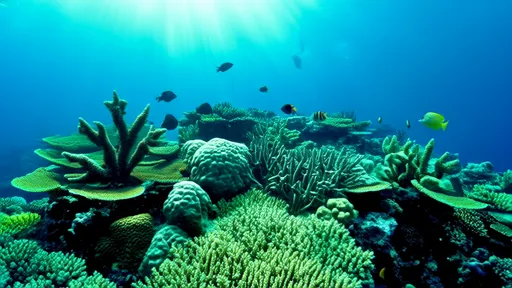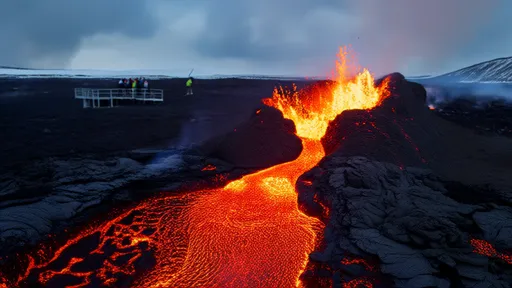The latest coral census of Australia's Great Barrier Reef has revealed encouraging signs of recovery in several key regions, offering a glimmer of hope for the world's largest coral reef system. After years of devastating bleaching events and environmental pressures, scientists have documented notable regeneration in select areas, particularly in the northern and central sectors. The findings, while cautiously optimistic, underscore the resilience of coral ecosystems when given respite from acute stressors.
Marine biologists conducting the comprehensive survey noted that reefs between Cairns and Townsville exhibited the most robust recovery. These mid-shelf reefs, benefiting from improved water quality and reduced crown-of-thorns starfish outbreaks, have shown remarkable regrowth of fast-growing branching corals. The Swain Reefs and Capricorn-Bunker Group in the southern Great Barrier Reef also demonstrated significant improvement, with coral cover increasing by nearly 30% in some locations since the last major bleaching event.
The recovery patterns appear closely tied to local environmental conditions and management interventions. Areas with strong water flow and consistent monitoring programs tended to fare better than isolated reefs. Researchers particularly highlighted the positive impact of the Australian government's Reef 2050 Plan, which has focused on reducing agricultural runoff and improving coastal water quality. The correlation between effective land management and coral recovery has become increasingly evident in the census data.
Interestingly, the census revealed that not all coral species are recovering at the same pace. Fast-growing acropora corals have rebounded quickly in many areas, while slower-growing massive corals continue to struggle. This differential recovery rate could potentially alter the ecological balance of reef systems in coming decades. Marine ecologists emphasize that while the rapid return of branching corals provides crucial habitat for reef fish and other marine life, the long-term health of the ecosystem depends on maintaining biodiversity across all coral types.
Climate patterns have played a significant role in the recent recovery. The absence of major cyclones and extended periods of moderate sea temperatures over the past two years created ideal conditions for coral regrowth. However, scientists warn that this respite may be temporary, with climate models predicting increased frequency of marine heatwaves in the coming decade. The delicate balance between recovery periods and stress events will likely determine the future trajectory of the Great Barrier Reef's health.
The census data has also shed light on the importance of connectivity between reef systems. Researchers observed that reefs located along major current pathways tended to recover faster, suggesting that larval dispersal plays a crucial role in repopulating damaged areas. This finding has important implications for conservation planning, highlighting the need to protect networks of reefs rather than focusing solely on individual high-value sites.
Traditional Owner groups have been instrumental in the recovery process, combining traditional ecological knowledge with modern conservation techniques. In several indigenous sea country areas, culturally significant reefs have shown above-average recovery rates. The successful integration of cultural burning practices on nearby islands to reduce sediment runoff demonstrates how ancient stewardship practices can contribute to contemporary reef management strategies.
While celebrating these positive developments, marine scientists caution against complacency. The overall coral cover across the Great Barrier Reef remains below historical averages, and many southern reefs continue to face challenges. The recent recovery represents a window of opportunity to implement stronger protection measures before the next major stress event occurs. Researchers emphasize that long-term survival of the reef will require both local conservation efforts and global action on climate change.
The tourism industry has welcomed the census results, with several operators reporting improved coral sightings at popular dive sites. However, reef managers are carefully balancing increased visitor access with protection needs, implementing seasonal closures and visitor caps in sensitive recovery areas. This delicate approach aims to sustain both ecological recovery and the reef's vital economic contributions.
Looking ahead, scientists plan to use the census data to refine predictive models of reef resilience. By understanding why certain areas recovered more vigorously than others, conservationists hope to develop targeted interventions that can boost natural recovery processes. The next five years will be critical in determining whether these recovery trends can be sustained or if they represent a temporary reprieve in the ongoing challenges facing this natural wonder.

By /Aug 5, 2025

By /Aug 5, 2025

By /Aug 5, 2025

By /Aug 5, 2025

By /Aug 5, 2025

By /Aug 5, 2025

By /Aug 5, 2025

By /Aug 5, 2025

By /Aug 5, 2025

By /Aug 5, 2025

By /Aug 5, 2025

By /Aug 5, 2025

By /Aug 5, 2025

By /Aug 5, 2025

By /Aug 5, 2025

By /Aug 5, 2025

By /Aug 5, 2025

By /Aug 5, 2025

By /Aug 5, 2025

By /Aug 5, 2025